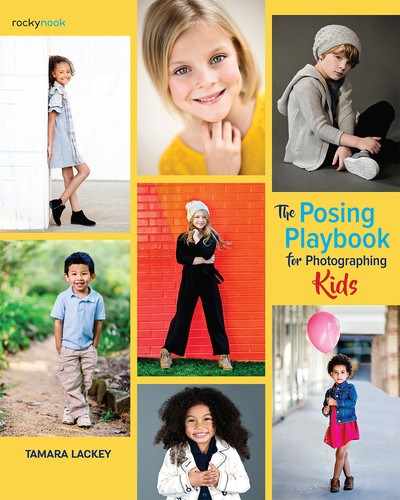Introduction
I LOVE PHOTOGRAPHY. I LOVE THE WORK I DO, the way I am able to do it, and the people I get to spend time with while I stay focused on consistently getting better at my job. And the reason all of that is true is because I’ve been able to stop and confidently define my style. Not right away, though. Initially, I defined it mostly by what it was not, a pretty common approach to defining one’s photographic style. I’ve also failed at enough approaches to be able to rule out quite a bit!
Over time, though, I have come to recognize what I most naturally bring to the table, how that has always been reflected in my style of shooting, and how to better incorporate it into my photo shoots going forward. I know what fundamentals are required in order for me to succeed—and I have practiced them all again and again.
At the root of my style of shooting is a combination of traditional posing that morphs into something quite natural and beautiful through spirited engagement, light-hearted adjustments, and a concerted effort to find the authentic. I want to share much of that with you throughout this book.
In 2003, when I first started shooting professionally, I mostly saw traditional poses in the work that was being produced around me. Generally speaking, these portraits struck me as stiff, unnatural, and sometimes even boring. The poses were often elegant, no doubt. The backdrop could be quite lovely, and the lighting techniques were often well-executed. I admired those aspects a great deal—even more so over time, actually. But these assets were often just repeated in portrait after portrait, so much so that it looked like the only thing swapped from image to image was the actual subject. Thus, from my perspective, the subject appeared to be a rather insignificant part of a repeated portrait. More apparent than all of that, though, was the lack of emphasis on expression. I was struck by that most because it is something that is more significant to me than anything else in a portrait.
In contrast, I was excited to pursue a fresh and unique approach to traditional portraiture, which included more dramatic black-and-white tones, vibrant color, and a major emphasis on storytelling, emotion, and authenticity. This genre of photography was soon referred to as contemporary photography, or later, lifestyle photography. The concept was not just to photograph someone’s likeness, but to try to capture their spirit as well—their personality, their emotion, and many of the inherent characteristics they possessed that felt real and true.
As I progressed with my portraiture, though, I realized that although I wanted to capture the spirit of my subject, I also cared about showcasing them in as flattering a way as possible. Simply put, I wanted to bring out the natural beauty of my subjects. I used my intuition to anticipate the most striking moments to capture during a shoot. Those moments were ones that I’d discovered more through feel and intuition than through technique and the technical aspects of photography. But I started to recognize that without strong lighting, exposure, composition, and framing, the impact of expression would be lessened notably. I wanted to photograph what my subjects were all about, but I also wanted to incorporate some of those tried and true posing methods that truly elevate the look and feel of the subject, as well as the overall impact of the portrait.
From my perspective, if one relies heavily on focused observation as a style of capture, it actually becomes even more critical that he or she learns the techniques associated with traditional photography. Since there is less one can control, being able to implement some level of management over fluid situations creates more opportunity for artful capture.
Photographing something differently just for the sake of being different doesn’t always mean you are creating something compelling or visually striking. But photographing something in a way that draws the viewer in, in a way that is innovative or memorable or truly original, means you are also likely harnessing some of those traditional philosophies—just with your own personal view, a potentially modern twist, and your unique sense of perception.
